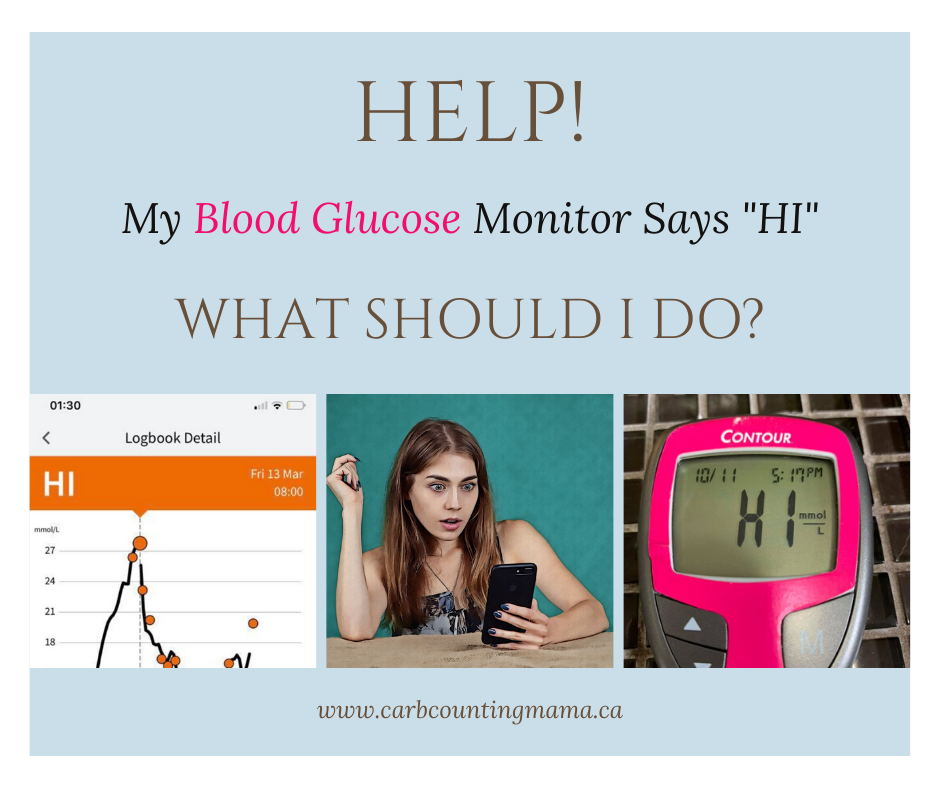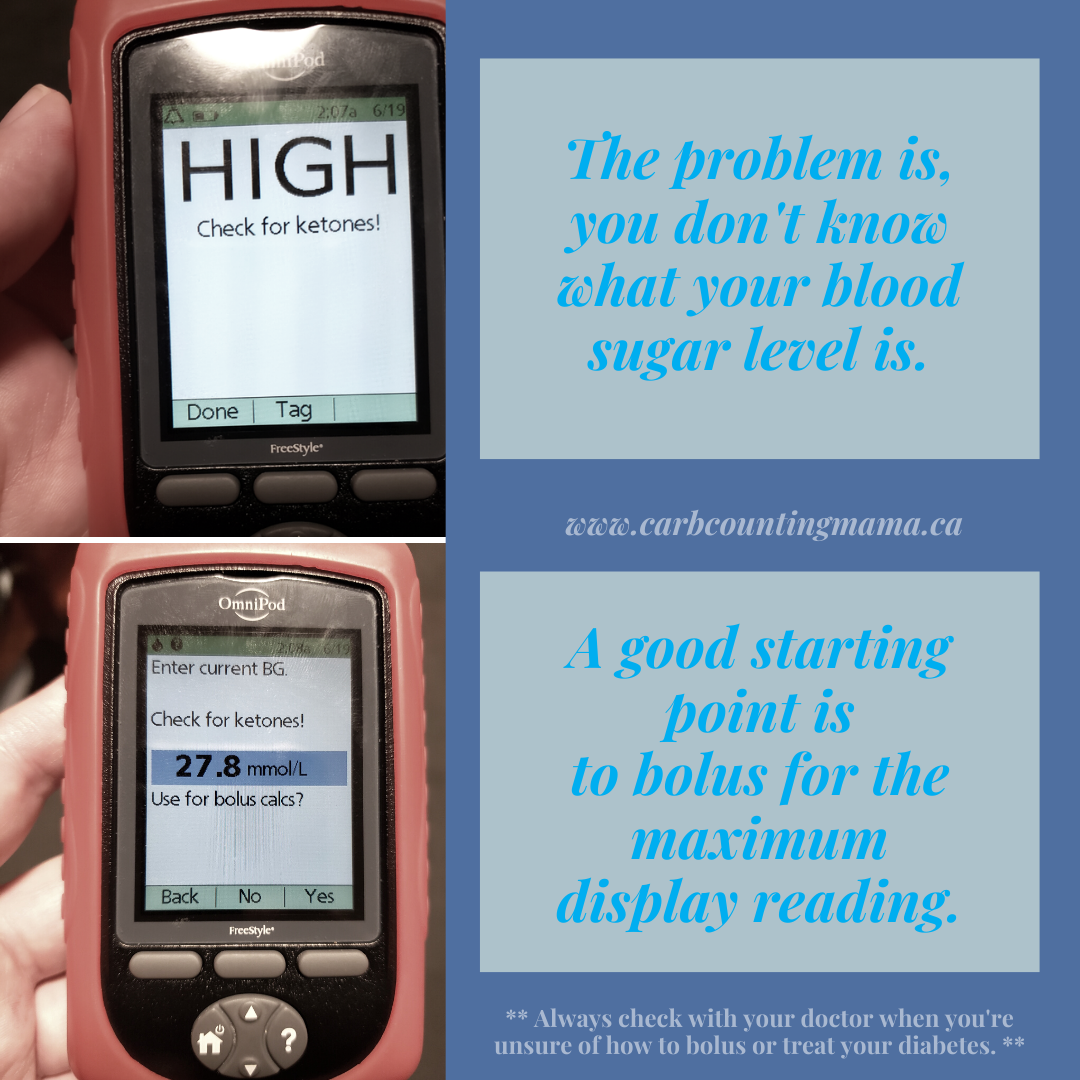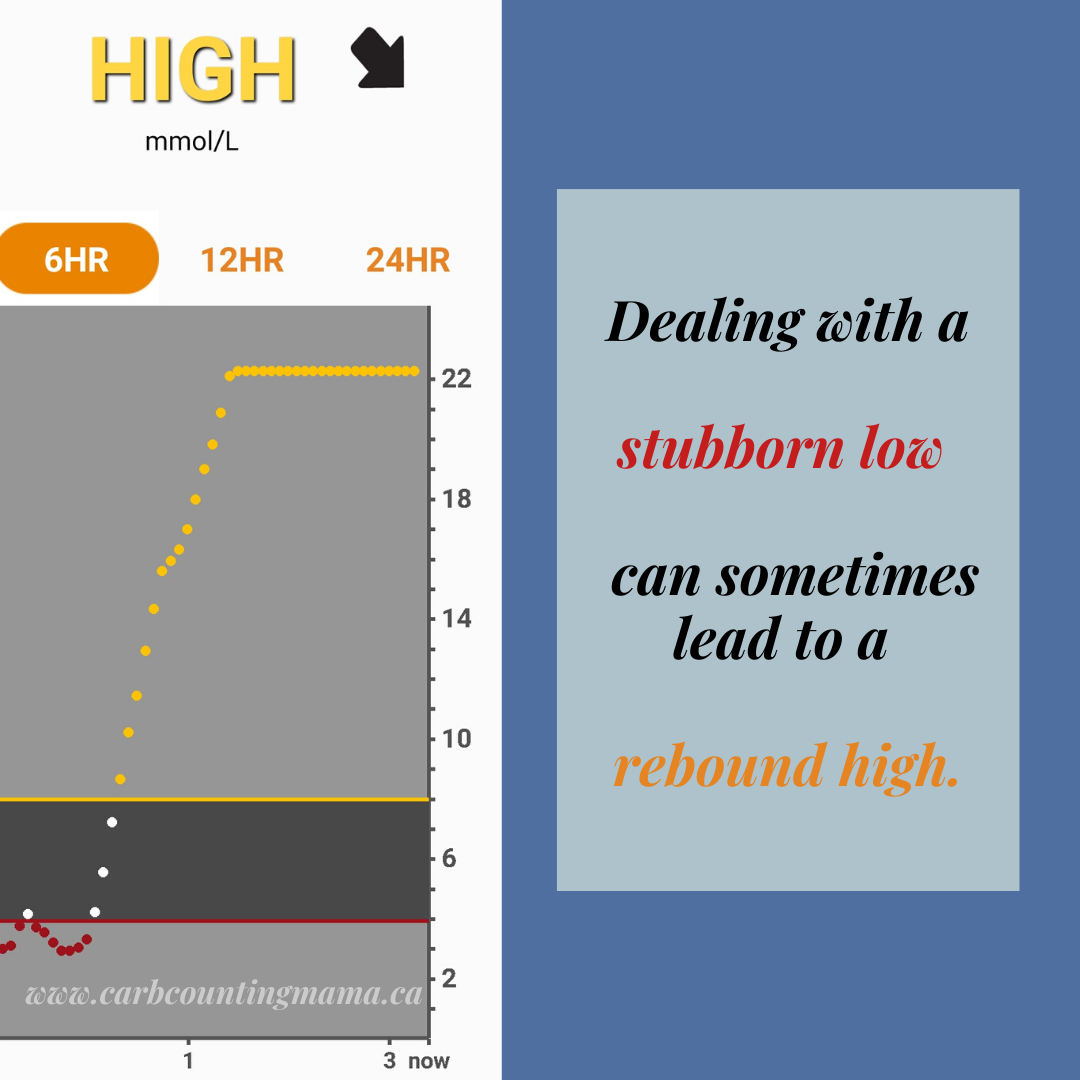As a type 1 diabetic, one of the things you have to do every day, multiple times a day, is check your blood sugar. It gives you much-needed information that you’ll use to manage your diabetes. It will tell you if you need insulin or glucose and approximately how much you might need. But what do you do if your meter says “HI” instead of displaying a number?

This post contains affiliate links
I am not a doctor or medical professional. This article is for informational purposes only. If you are thinking about changing the way you treat your diabetes, consult your medical team for assistance.
The sky is not the limit
Sorry to say, your meter is not politely greeting you. (As if it would be that nice).
Blood glucose monitors have a limited range that they can read. If your blood sugar is higher or lower than that range, it will just say “HI” or “LO” (or something similar). We can worry about the “LO” later, but let’s talk about how high “HI” really is.
Most meters read up to 600mg/dL (33.2mmol/L). There are some that read up to 500mg/dL (27.8mmol/L), and a few that read even lower than that. So you need to know what “HI” means for your meter. Check the manual that came with your meter if you aren’t sure.
Simply put, “HI” means your blood glucose is higher than the top number that your meter is able to display. It could be one point higher, hundreds of points higher, or anything in between.
What to do when you get a “HI” reading
- Double-check. First, you want to make sure the reading is accurate. Thoroughly wash and dry your hands. Then recheck. Sometimes, food particles on your fingers will cause the meter to have a false high. If it’s a false high, you do NOT want to be giving yourself/ your child insulin. Make sure your hands are completely dry before rechecking. If your finger has water or alcohol on it, that can cause a false low.
- Insulin. When you have T1D, the only way to bring down a high blood glucose number is to give insulin. The problem is, you don’t know what your blood sugar level is. All you know it’s higher than your meter can read. Since you don’t know how high your blood glucose is, but you know it’s at least the maximum reading for the brand of your meter, a good starting point is to bolus for the maximum display reading. ** Always check with your doctor when you’re unsure of how to bolus or treat your diabetes. **
- Ketones. It’s commonly recommended to check for ketones when there’s hyperglycemia. If ketones are present, additional insulin may be needed. If you don’t have one already, talk to your doctor about getting a chart that shows you how much insulin to give for different ketone levels.
- Hydrate. Keeping hydrated is very important with high blood glucose (especially if you have ketones as well). Dehydration can accelerate DKA, which no one wants.
- Follow up. Check your blood sugar again. You might want to wait for the insulin duration (so there is no IOB) or you may want to check sooner just to make sure the insulin is doing its job. If you need a subsequent bolus, be careful that you don’t stack the insulin and end up with a rebound low.
When checking ketones, using a ketone meter instead of urine strips is important for accuracy. Urine strips measure the level of ketones that was in your bloodstream several hours ago. Blood ketone meters give you real-time results. Also, blood ketone meters provide a number rather than the color-coded result that you get from urine strips.
All it takes is a simple finger poke and you know exactly what your ketone level is.

Troubleshooting why your blood sugar is “HI”
Once you’ve confirmed that it’s a real “HI” and you’ve given insulin, it’s a good idea to try to figure out why your blood sugar went so high in the first place. There are many many reasons it can happen. Here are several things we check if we get a “HI” reading:
- Consider what was eaten recently. Does it make sense that your blood glucose would go up from that meal? If it’s just about what was eaten, you might want to look into timing your insulin differently for that kind of meal. You can get lots of information about insulin and food timing from the book Sugar Surfing.
- The bolus was miscalculated. Maybe the carb count on the packaging was wrong. Or you used the wrong carb ratio for that time of day. With the little sleep most of us get, this is easier to do than you’d think.
- The bolus was missed entirely. Things were chaotic, you got interrupted, maybe you forgot to bolus. If you’re using a pump, you can double-check if a bolus was delivered. We’ve had a few times where my son punches in his bolus and then moves too far away from the PDM and it doesn’t bolus for a meal. If you’re doing MDI, it’s a bit more tricky. Try to retrace your steps and remember whether or not you’ve given a bolus.
- The insulin is no longer working. This can happen for several reasons. Maybe it got too warm or too cold at some point. Maybe it’s past the expiration date or the vial has a hairline crack in it. Whatever the reason, if it’s the insulin, you need to start a new vial/ pen.
- The pump site needs to be changed. There may be a leak or the cannula has shifted and the insulin isn’t getting where it needs to be. Or, sometimes when the insulin is quite low in the reservoir, it doesn’t work as well (possibly due to having more air in it at that point). If you can smell insulin or it is wet around the site, this is probably the case. Many pump companies will replace the pod/site if it comes out before it should.
- The injection site needs to be rotated. – If you use the same injection site for every injection, you build up scar tissue in that area, making insulin absorption more random. This is a double-edged sword. Not only will you get the “HI” reading because it’s not absorbing, but you may have hypoglycemia later when it finally does get into your system.
- You might need to adjust your basal rate or ratios. If “HI” blood glucose readings are becoming a trend, you may need to make some adjustments. Talk to your doctor about what to change and how much to change it.
- It’s a rebound high. If you’ve just dealt with a low blood sugar, maybe you gave more than what was needed. Maybe it seemed like the glucose wasn’t working and then, after several treatments, it all kicked in and is now causing hyperglycemia.

Whatever the reason
A “HI” blood glucose reading needs to be dealt with right away. If you aren’t comfortable treating it yourself, contact your doctor or go to a hospital. If you have “HI” blood sugar and ketones, you could be headed for DKA. Always consult your endo if you suspect DKA and don’t hesitate to go to the hospital for treatment.
So next time you see a “HI” blood glucose reading
Don’t panic, you know what it means and what to do.
And if you’re anything like me, you’ll grumpily say “hi” back to it (because we all talk to our pumps and meters right?!?), troubleshoot, and get that blood glucose back in range.
It happens to the best of us.
Here’s to happy, in-range blood sugars!! 🥂
~ Leah
For more tips and stories about T1D, join the Carb Counting Mama email list, and make sure to head over to the Carb Counting Mama Facebook page and “like” it.
I read my glucose meter, and it said hi, don’t know why that happened, I’m at emergency room now.
Oh no! Hope you get it back into range and feel better soon.